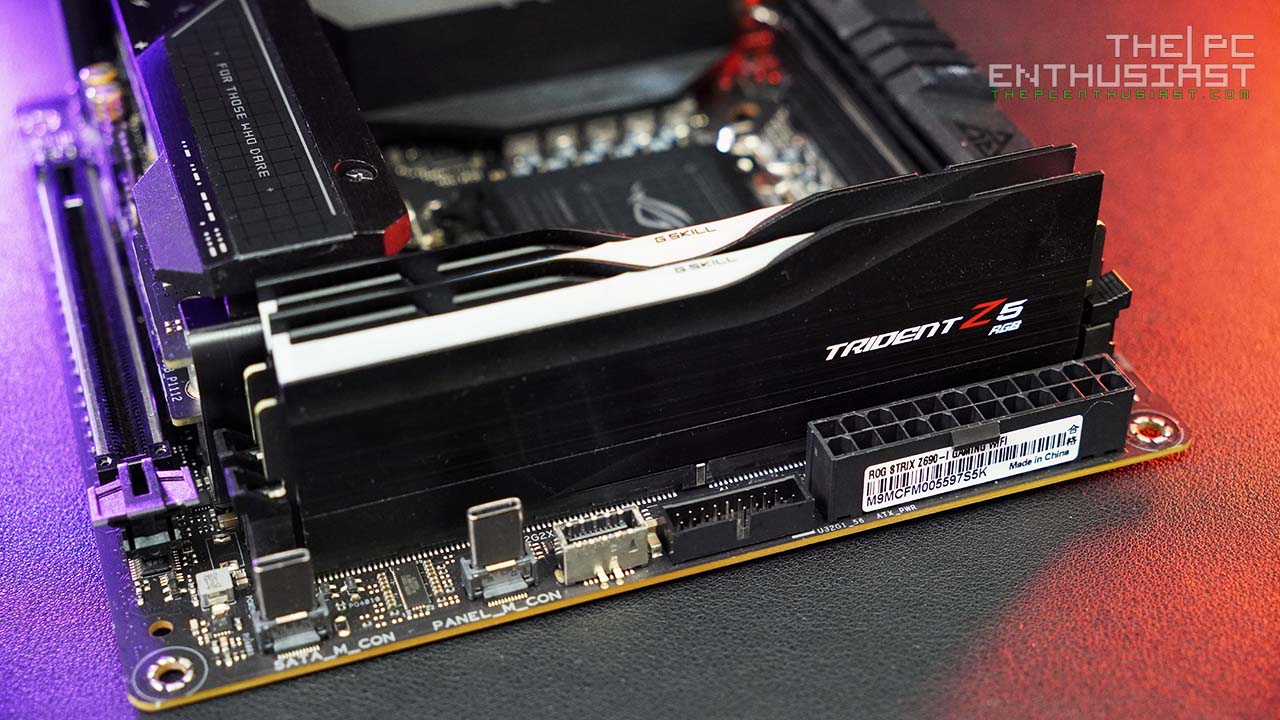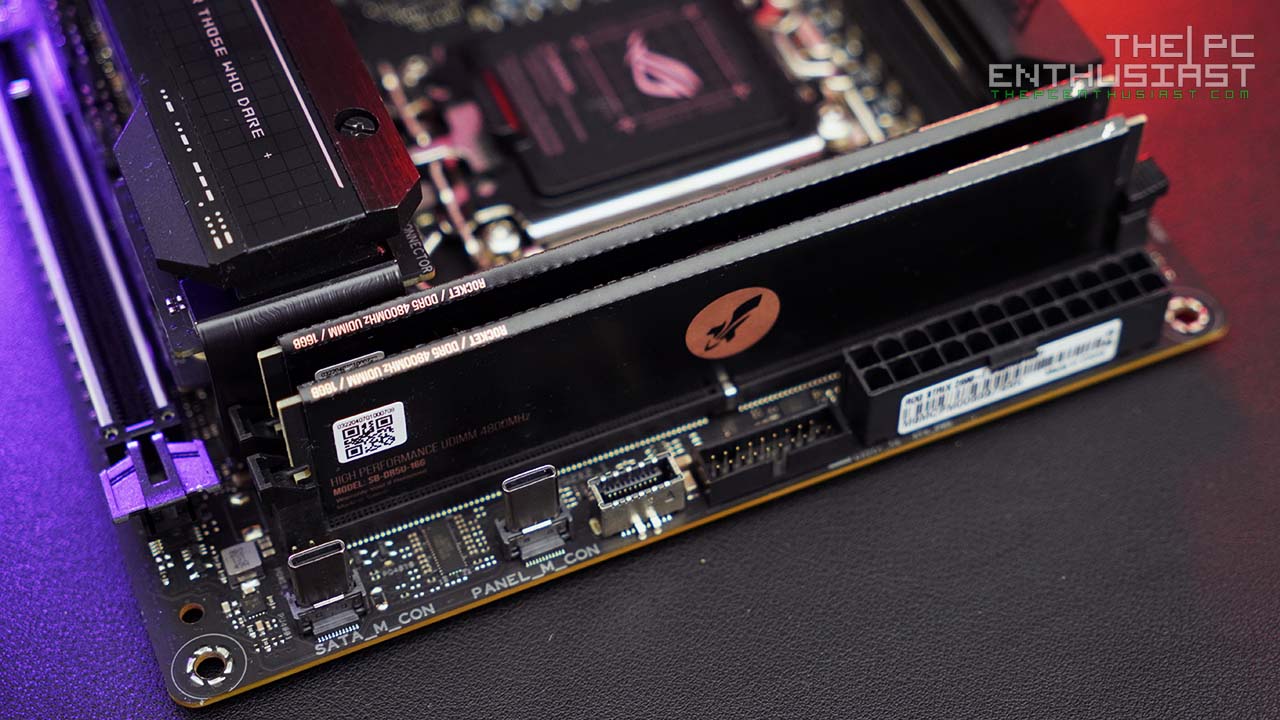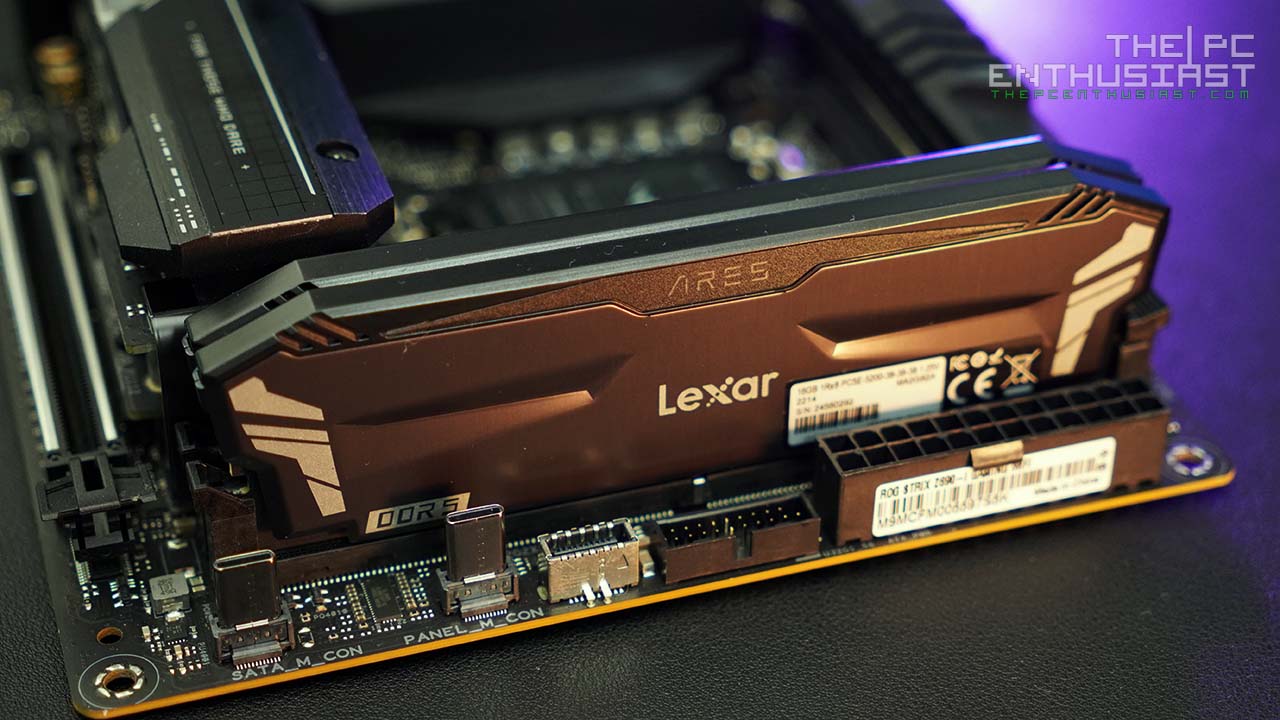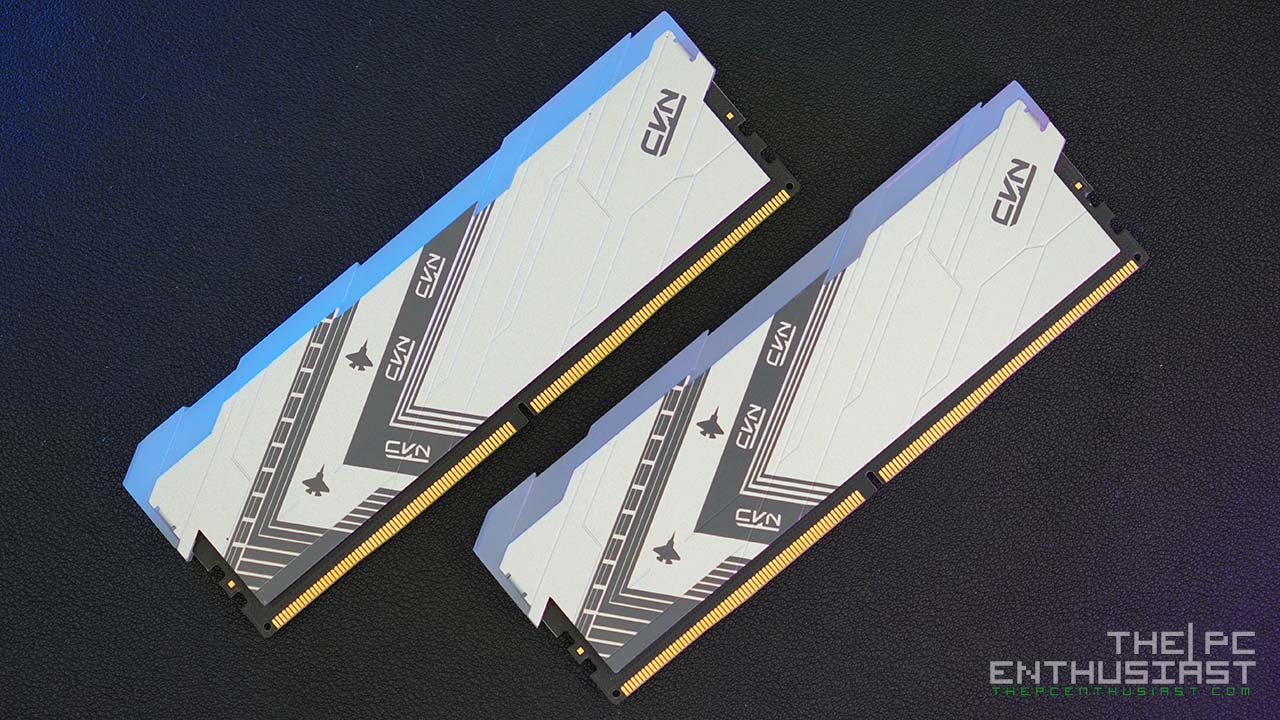Today we are checking out Lexar’s latest high-performance DDR5 memory kit – the Lexar ARES RGB DDR5-6000MHz CL34. We previously reviewed the non-RGB version of the ARES, but it was only a DDR5-5200MHz kit. And during that time, the ARES RGB wasn’t released yet. The Ares RGB memory kit was only released last week, and it competes with other DDR5 memory with RGB lighting. Lexar’s ARES RGB DDR5 may not be the fastest memory kit, but it supports both Intel XMP 3.0 and AMD EXPO. Please continue reading our Lexar ARES RGB DDR5 review below and find out how it performs.

Lexar ARES RGB DDR5-6000 CL34 Memory Kit Review
Lexar’s latest DDR5 memory, ARES, is an improvement of its non-RGB predecessor. Lexar positions the ARES RGB on its high-performance gaming segment for enthusiasts and gamers. Unlike the non-RGB ARES, the new one is available in two kits. The ARES RGB is available in DDR5-5600Mz and DDR5-6000MHz kits, and 32GB memory capacity seems to be the “default” or standard size for the latest systems. These new kits also support Intel XMP 3.0 and AMD EXPO, meaning you can use them on an Intel 600/700 series chipset or AMD’s AM5 motherboard.
Lexar ARES RGB DDR5 desktop memory features onboard Power Management IC (PMIC) to provide better power control and power delivery. It also includes Lexar RGB Sync, which lets gamers customize the RGB LED to their style. Below are the complete specs of Lexar’s ARES RGB DDR5 memory kits.
Lexar Ares DDR5 Memory Specifications
| Model | ARES RGB DDR5 |
|---|---|
| Capacity | 32GB Kit (16GBx2) |
| Memory Type | DDR5 |
| Interface | 288PIN |
| Standard | Intel XMP 3.0 and AMD EXPO |
| Speed | 5600 MHz 6000 MHz |
| CAS Latency | CL32-36-36-68 CL34-38-38-76 |
| Voltage | 1.2V 1.3V |
| Operating Temperature | 0°C to 85°C |
| Storage Temperature | -55°C to 100°C |
| Module Size (LxWxH) | 140 x 43.3 x 7.9mm (with heat spreader) |
Check the latest pricing and availability: (#ad)
Lexar ARES RGB DDR5 is available on Amazon.com here.
Packaging and Closer Look


The Lexar ARES RGB DDR5 memory kit’s retail packaging is almost identical to the non-RGB ARES. The only difference is we can see that the memory kit features RGB lighting. You can see the memory kit’s capacity at the front, as well as its memory speed. Meanwhile, additional information is printed at the back.
Aesthetically speaking, the ARES RGB DDR5’s heatsink design is also similar to its non-RGB variant. However, instead of a black top portion, it is replaced by a diffuser for the RGB lighting. Each stick is 43.3mm high and 7.9mm thick.


Although the memory stick isn’t that high at 43.3mm, you should check first if your CPU cooler will have enough clearance for the ARES RGB. If you use an AIO liquid cooler, then a memory’s height is a non-issue. Newer single-tower CPU air coolers usually have room for the memory sticks even with their fans installed. However, for dual tower CPU air coolers, or in the case of some huge CPU air coolers, you need to check if there’s (enough) room.



The RGB lighting on the ARES is nothing spectacular or jaw-dropping. However, it is not bad as well. The light is bright, and the color looks vivid enough. I’ve seen many similar-looking RGB lighting effects or designs, such as Corsair’s Vengeance RGB, so yes, it’s nothing new to my eyes. RGB lighting and aesthetics aside, the most important thing about a DDR5 memory is its performance. Let’s find out how Lexar’s new ARES RGB DDR5 memory performs.
Test System Used

In testing the Lexar Ares RGB DDR5-6000 32GB (2x16GB) memory, I’m using an X670E motherboard powered by an AMD Ryzen 7 7700X CPU. Below are the rest of the specifications of the system:
| Operating System | Windows 11 Pro |
| Processor | AMD Ryzen 7 7700X |
| Motherboard | MSI MPG X670E Carbon WiFi |
| Memory | Lexar ARES RGB DDR5-6000 |
| Graphics Card | MSI GeForce RTX 4080 SUPRIM X |
| OS Drive | MSI Spatium M480 Play |
| Game Drive | SanDisk Extreme PRO Portable SSD V2 and Extreme Portable SSD V2 |
| Power Supply | MSI MPG A1000G PCIE5 |
| Chassis | MSI MPG Velox 100P Airflow |
| Monitor | MSI Optix MPG321UR-QD 4K 144Hz |

Lexar ARES RGB DDR5-6000 CL34 Benchmarks
AIDA64 Memory Benchmark Results


In the Aida64 memory benchmark, we can see that the Lexar Ares RGB DDR5-6000 performs similarly to the other two memory kits. My Corsair Vengeance RGB has the same clock speed but with a slightly lower CAS latency. Meanwhile, the ADATA XPG Lancer RGB is clocked slightly slower at 5600MHz, and with a slightly higher CAS latency of CL36. Overall, their performance is very similar, but the ADATA XPG Lancer is slightly falling behind due to its slower clock speed.
Cinebench R23 Benchmark Results

In Cinebench R23, the ADATA XPG Lancer returned with the “highest” score, while the Corsair Vengeance fell behind. Lexar’s ARES RGB is still in the middle; however, the performance difference between these three DDR5 memory kits is so small that it is negligible.
3DMark Benchmark Suite





In 3DMark’s benchmark suite, we can see that the three DDR5 memory kits are neck and neck with each other. They are just trading blows, and again, we can see that their performance difference is negligible in this test.
Shadow of the Tomb Raider Game Benchmark

I didn’t test many games since the results would be more or less similar. As you have seen from the 3D Mark benchmark results, each memory kit’s difference isn’t huge. But a faster DDR5 memory with lower latency or tighter timings usually performs better. I tested the memory kits using the Shadow of the Tomb Raider’s built-in benchmark since it’s very consistent.
I’m a bit surprised that the Lexar ARES RGB fell behind in the 1080p and 1440p benchmarks. I was expecting that it would sit in the middle of this test. There’s a 10 to 20 fps difference, and I don’t know why it got a lower result. I ran the benchmark several times, but I still got the same results in different instances.
PCMark 10 Benchmark

Last, I tested the memory kits using the PCMark 10 benchmark test. This test is a comprehensive set of tests that covers a wide range of activities, from everyday productivity tasks to demanding work with digital media content. It’s primarily divided into three categories: content creation, productivity, and essentials.
Unfortunately for the Lexar ARES RGB DDR5, it fell behind in this test as well. It didn’t even reach a total core of 9000 points. What surprised me is the ADATA XPG Lancer got a substantially higher score in the content creation test despite being the “slower” memory kit. Honestly, I do not have an explanation for this. I don’t have a huge sample size for AMD EXPO-enabled DDR5 memory kits yet.
Pricing and Availability
Lexar ARES RGB DDR5 desktop memory kits are now available in the US in a 32GB (2x16GB) kit and are compatible with major motherboard brands. It is available at an MSRP of $139.99 for 5600MHz and $149.99 for 6000MHz. For the latest pricing and availability, kindly follow the link below. (#ad)
Lexar ARES RGB DDR5 is available on Amazon.com here.
Lexar ARES RGB DDR5-6000MHz Review Conclusion
Aesthetically speaking, Lexar’s ARES RGB DDR5-6000 memory kit looks good. It’s nothing unique since most RGB-feature memory sticks look similar or have a similar RGB light bar on top. But the colors are vivid, and the light is bright enough and properly defused.
When it comes to performance, I think it generally performed well overall. However, I was not expecting it to fall slightly behind in Shadow of the Tomb Raider and PC Mark 10. Maybe I got a less-than-stellar performing silicone/batch, or maybe it could use some better tweaking and configuration from Lexar’s lab.
With the new ARES RGB DDR5 memory kit, Lexar aims to compete with Corsair’s Vengeance RGB DDR5, ADATA’s XPG Lancer DDR5, Kingston’s Fury Beast RGB DDR5, and G.Skill’s Trident Z5 Neo. I think Lexar has a slight advantage regarding compatibility since their memory kit supports both Intel XMP 3.0 and AMD EXPO. Meanwhile, other competing memory kits only support one technology per kit. For example, G.Skill Trident Z5 usually only supports Intel XMP 3.0, and you’ll have to get the Trident Z5 Neo with AMD EXPO support for AMD systems.
On the flip side, since Lexar just released the ARES RGB, they may need to adjust its current retail price. While its competition initially launched at a slightly higher price, most, if not all, of the memory kits I mentioned above are currently selling for a slightly lower price than Lexar’s ARES RGB.
At the end of the day, I think Lexar’s ARES RGB DDR5 memory is an okay memory kit, but I would only consider this if they are selling for a (much) lower price than the competition.










